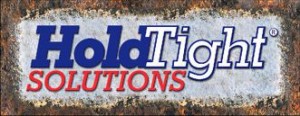Archive for 'NSRP'
Lighting and Angle of Light Source
Posted on 15. Mar, 2009 by charles frenzel.
Lighting and Angle of Light Source Illumination is critical. Use as a standard Reference Document SSPC Guide 12 “Guide for Illumination of Industrial Painting Projects” The visual guides do not show the effect of the angle of the light source. SSPC Technology Guide No. 12 recommends an illumination of 50 foot candles minimum to 200 […]
Continue Reading
VIS Photos for Flash Rust
Posted on 15. Mar, 2009 by charles frenzel.
Use of VIS Photo for Flash Rust Prior to painting, compare the flash-rusted surface with the flash rust photographs. Wipe or use tape as a further determination. Photos above Courtesy of Pete Ault and Steve Cogswell, 2007 NSRP Project In this case, the two reference surfaces are very similar. Both panels had a metallic […]
Continue Reading
VIS Guides for Visual Cleanliness
Posted on 15. Mar, 2009 by charles frenzel.
Use of VIS Guides for Visual Cleanliness Immediately after the cleaning, before the surface has flash rusted, (it might still be wet), evaluate the degree of Visual Cleaning. The visual cleaning evaluation often occurs while the surface is still wet. A section was cleaned with hand-held lances over a period of 3 days. Then […]
Continue Reading
VIS Guides and Initial Conditions
Posted on 15. Mar, 2009 by charles frenzel.
Use of VIS Guides for Initial Condition Determine the initial condition of the steel before the flash rust forms. Initial condition is illustrated as painted or unpainted steel. Select a photograph that is similar to the initial condition The inspector and the contractor should be aware that the initial condition of the steel can vary […]
Continue Reading
Use of VIS Guides
Posted on 15. Mar, 2009 by charles frenzel.
Use of VIS Guides Distance from the surface will affect your judgment. If you’re too far away, you won’t be able to see through the flash rust in order to determine the difference between “steel substrate may be observed” [Light flash rust] and “obscures the original steel surface” [Medium flash rust]. Heavy flash rust simply […]
Continue Reading
Field Tests for Quantification
Posted on 15. Mar, 2009 by charles frenzel.
Field Tests to Evaluate the Quantity of Flash Rust The wipe and tape tests are subjective and require interpretation by the inspector. The interpretation can be difficult at first, but become simple with practice. Look at the FLASH RUST Assess the volume by observation Wipe and/or Tape Three Methods of Wiping • Hand Wipe with a […]
Continue Reading
Classification of Flash Rust
Posted on 15. Mar, 2009 by charles frenzel.
Light Flash Rust Light (L) flash rusted surface: A surface that, when viewed without magnification, exhibits small quantities of a rust layer through which the steel substrate may be observed. The rust or discoloration may be evenly distributed or present in patches, but it is tightly adherent and not easily removed by lightly wiping with […]
Continue Reading
Discoloration
Posted on 15. Mar, 2009 by charles frenzel.
Discoloration Brown or black discoloration remaining in pits is not the same as flash rust. Metals other than carbon steel can manifest discoloration as well. USS Champlain CG 67 Example of Discoloration San Diego 2002. Photo courtesy Y&T Consulting There is no one single type of “flash rust.” With the exception of stainless […]
Continue Reading
Project Goals and Objectives
Posted on 13. Mar, 2009 by charles frenzel.
Project Goals and Objective: This document is a supplement to SSPC-VIS No. 4 NACE VIS 7 (or ISO 8501-4). SSPC-VIS No. 4 NACE VIS 7, ISO 8501-4, International Paint Hydroblasting photos, and Hempel photos do not illustrate 1) an example of lightly wiping 2) an example of the surface after excess flash rust with loose rust dust […]



